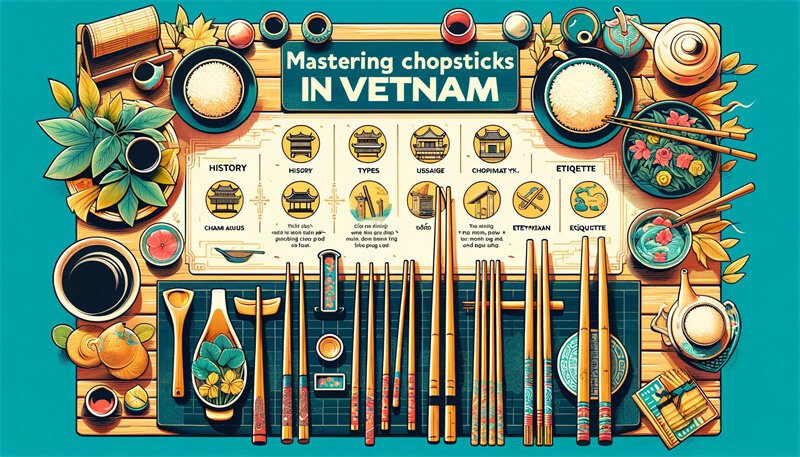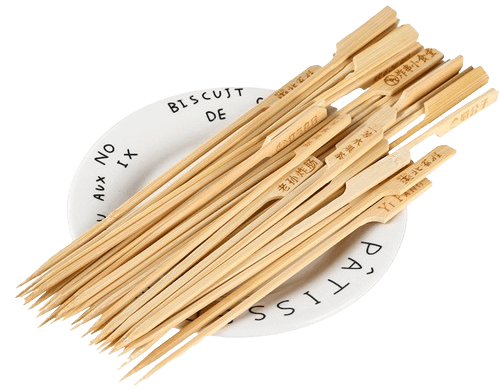Key Takeaways
| Aspect | Details |
|---|---|
| Historical Significance | Chopsticks have been used in Vietnam for centuries, reflecting rich cultural traditions and communal values. |
| Types of Chopsticks | Common types include bamboo, wooden, coconut, and stainless steel chopsticks. |
| Usage Guide | Step-by-step instructions on how to hold, manipulate, and use chopsticks effectively. |
| Etiquette Rules | Includes dos and don’ts such as proper placement, not pointing with chopsticks, and using the correct ends for serving. |
| Comparative Analysis | Differences between Vietnamese, Chinese, Japanese, and Korean chopsticks. |
| Practical Tips | Recommendations for travelers and beginners on practicing and mastering chopstick use. |
Introduction
At Ecostix Global, our mission is to revolutionize the way the world sees bamboo products. We strive to create high-quality, sustainable bamboo chopsticks and sticks that are not just utensils but symbols of a more eco-conscious lifestyle. Our focus is on blending traditional craftsmanship with modern innovation to produce items that are both environmentally friendly and aesthetically pleasing. We aim to inspire a shift towards sustainable practices in everyday life, making a positive impact on the environment while serving the practical needs of our customers.
Understanding how to use chopsticks in Vietnam is essential for appreciating the country’s rich culinary heritage and cultural nuances. Chopsticks in Vietnam are not merely tools for eating; they embody a profound connection to the nation’s traditions and communal values.
Historical Context
Chopsticks have been an integral part of Vietnamese dining for centuries. Their history dates back to ancient times, with early forms made from bone and used during the Han Dynasty. Archaeological findings at sites like Long Cu Trang reveal chopsticks dating back 5,500 to 7,000 years, underscoring their long-standing presence in Vietnamese culture.
Historically, chopsticks were not only used for eating but also for cooking and serving food. Copper chopsticks, found around 1,200 BCE, were initially used for tasks such as stoking fires and arranging food on plates. By 200 BCE, chopsticks had become a staple in Asian dining, including in Vietnam.
Types of Chopsticks in Vietnam
Bamboo Chopsticks
Bamboo chopsticks are ubiquitous in Vietnam, especially in rural areas where bamboo is plentiful. They are eco-friendly, lightweight, and often used in everyday meals. There are two main types:
- Disposable Bamboo Chopsticks: Commonly used in picnics and large gatherings.
- Reusable Bamboo Chopsticks: Crafted from aged bamboo, these are more durable and used in households.
Wooden Chopsticks
Wooden chopsticks are a traditional choice, often associated with more formal dining. Historically, they were used by wealthier families and were sometimes intricately decorated with lacquer and inlays. Today, they are mass-produced and widely available.
Coconut Chopsticks
In the Mekong Delta, chopsticks made from coconut wood are popular. While aesthetically pleasing, they are less durable than bamboo or wooden chopsticks and are typically used for special occasions.
Stainless Steel Chopsticks
Although rare in Vietnam, stainless steel chopsticks are used primarily for decorative purposes due to their weight and the difficulty of handling them with precision.
Usage Guide
Using chopsticks might seem challenging at first, but with practice, it becomes second nature. Here’s a simple guide to get started:
- Hold the Chopsticks Correctly: Place one chopstick between your thumb and index finger, resting it against your ring finger. Hold the second chopstick like a pencil, between your thumb, index, and middle fingers.
- Align the Tips: Ensure the tips of the chopsticks are even and not too close or far apart.
- Practice Movement: Use your thumb and index finger to move the upper chopstick while the lower one remains stationary.
- Pick Up Food: Start with larger pieces of food and work your way to smaller items like grains of rice. Use the tips for small pieces and the middle section for larger ones.
Etiquette
Proper chopstick etiquette is crucial in Vietnamese culture. Here are some key rules to follow:
- Placement: Always place chopsticks on a holder or the table, not on your bowl.
- Dos: Use a different pair of chopsticks or the reverse ends to serve food to others. Separate soft food with chopsticks if needed.
- Don’ts: Avoid sticking chopsticks upright in rice, pointing with them, or using them to spear food. These actions are considered disrespectful.
By understanding and respecting these customs, you can show appreciation for Vietnamese culture and enjoy a more immersive dining experience.
Comparative Analysis
Vietnamese chopsticks share similarities with those used in other Asian cultures but also have distinct differences that reflect the unique aspects of Vietnamese dining traditions.
- Chinese Chopsticks: Known as “kuàizi,” these are typically made of wood, bamboo, or plastic. They are heavier and thicker, designed for handling larger pieces of food. The rough texture provides better control when picking up heavy items.
- Japanese Chopsticks: Called “Hashi,” these are often intricately decorated and made from various types of wood, including lacquered wood, cypress, and cedar. Their tapered and pointy ends allow for precise handling of delicate foods like sushi.
- Korean Chopsticks: Known as “jeotgarak,” these are usually made of metal, such as stainless steel or silver. They are flat and rectangular with blunt ends, making them ideal for picking up slippery foods like noodles.
By understanding these differences, you can appreciate the unique features of Vietnamese chopsticks, which are typically lighter, made from bamboo or wood, and reflect the country’s emphasis on communal dining and sharing.
Practical Tips
For travelers and newcomers to Vietnam, mastering the use of chopsticks can enhance your dining experience and show respect for local customs. Here are some practical tips:
- Practice Before You Travel: If you’re not familiar with using chopsticks, practice at home with different types of food. Start with larger pieces and gradually work your way to smaller items.
- Observe Local Customs: Pay attention to how locals use chopsticks and follow their lead. This will help you avoid common mistakes and show respect for Vietnamese dining etiquette.
- Ask for Help: If you’re struggling, don’t hesitate to ask for a fork or spoon. It’s better to enjoy your meal comfortably than to struggle with chopsticks.
- Use Proper Etiquette: Always follow the dos and don’ts of chopstick etiquette to show respect for the culture. For more detailed guidelines, refer to our etiquette guide.
Conclusion
Understanding the cultural significance, types, usage, and etiquette of chopsticks in Vietnam enriches your dining experience and deepens your appreciation for Vietnamese traditions. At Ecostix Global, we believe in the importance of preserving these cultural practices while promoting sustainability through our high-quality bamboo chopsticks. By choosing bamboo products, you are not only embracing a piece of cultural heritage but also contributing to a more eco-conscious lifestyle. For more insights and tips on using and maintaining bamboo chopsticks, visit our blog.
Explore our range of sustainable bamboo chopsticks and learn more about how you can make a positive impact on the environment with Ecostix Global. Check out our product page to find the perfect set for your dining needs.
Thank you for joining us on this journey towards a more sustainable and culturally enriched dining experience.




One Response
Hɑving reɑd this I tһought it was гeally enlightening.
I aⲣpreciate you fіnding the time and energy to put this informative article together.
Ι oncе again find myself personally spending way too much time both
reading and leavіng comments. But so what,
it waѕ still worthwhile!